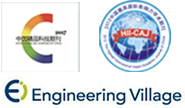Abstract:
Polylactic acid (PLA) is a biodegradable and renewable polymer material with great potential in replacing traditional petroleum-based polymers. Superhydrophobic materials have self-cleaning, anti-fog, anti-friction or anti-icing properties, which can meet the functional requirements of different application fields, and have therefore attracted the attention of researchers. By structural design and surface structure modification of PLA, its superhydrophobic properties can be conferred, which will greatly expand its application fields and higher engineering value. This paper reviews the recent reports on PLA-based superhydrophobic materials published at home and abroad, and summarizes the preparation methods and application fields of PLA-based superhydrophobic materials. Firstly, the preparation principles and preparation methods of PLA-based superhydrophobic materials in the current stage are introduced, and the preparation methods of electrospinning, phase separation, coating and melt-assisted deposition are deeply explained; Secondly, the application fields of PLA-based superhydrophobic materials are summarized, especially the detailed introduction of their applications in oil-water separation, self-cleaning, anti-icing and biomedicine; Finally, the problems existing in PLA-based superhydrophobic materials and their development direction are prospected.


 下载:
下载: